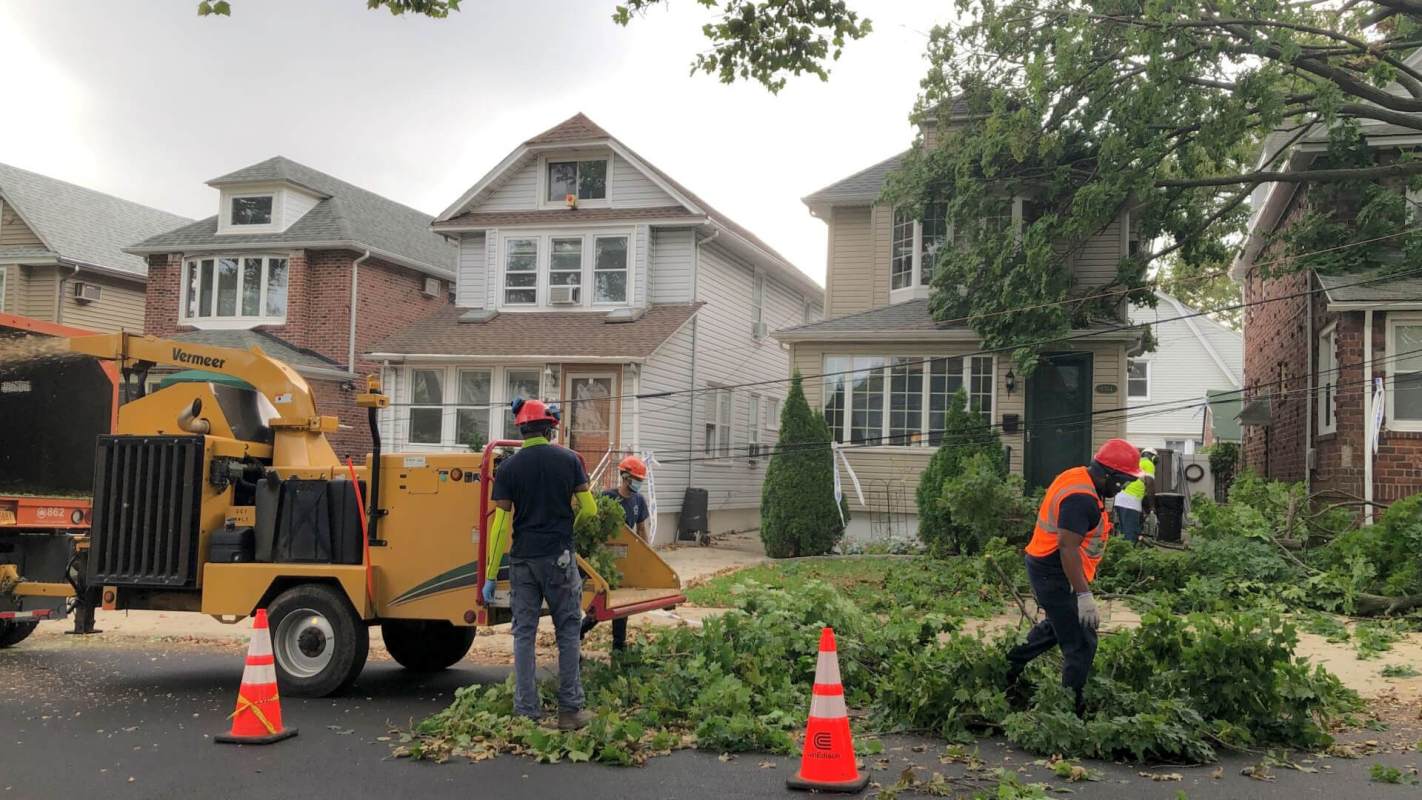La Niña, which translates to 'the girl,' is a periodic variation in winds and sea surface temperatures in the Pacific Ocean. It's characterized by an upwelling — or rising — of cold water along the equator in the Pacific Ocean.
During La Niña events, strong winds and ocean currents push warm surface water west toward Southeast Asia. This push allows cooler water from below to rise to the surface in the eastern Pacific around the Americas.
Changes in global weather patterns
Changes in sea surface temperatures affect air pressure and movement as well as rainfall patterns.
As a result, La Niña winter weather conditions often trigger a cascade of changes in global weather patterns. Some areas experience extreme heat and drought, while others experience torrential downpours and flooding.
The cooler Pacific Ocean temperatures of La Niña events push the Polar Jet Stream north. The typical results are drier, warmer conditions in the southeastern U.S. and colder, snowier conditions in the northwestern states and Canada from December through February.
Additionally, La Niña events are characterized by low-pressure conditions over the western Pacific. These conditions increase seasonal rainfall in Southeast Asia and Australia.
But over the eastern Pacific, high-pressure conditions prevail. This high pressure creates fewer clouds and brings less rain to this area. Drier conditions are typical in southern South America and the Gulf Coast.
In the Atlantic, La Niña conditions often intensify hurricane seasons. These conditions lower vertical wind shear in the Atlantic, which slows down storms and allows them to more easily become hurricanes.
While there are no storms immediately behind Ian, the Atlantic hurricane season is far from over.
— Ben Noll (@BenNollWeather) September 29, 2022
Favorable convective patterns look to return by mid-October, with additional tropical activity likely 📈
The sinking air over the Pacific suggests La Niña is in control. pic.twitter.com/Qq7P9SJCfp
'Triple-dip La Niña'
For the first time this century, La Niña has occurred for three consecutive years beginning in the spring of 2020.
Usually, these conditions last about a year and happen every three to five years.
This rare triple-dip La Niña has only happened twice before in records dating back to 1950 — from 1973 to 1975 and from 1998 to 2001.
"It is exceptional to have three consecutive years with a La Niña event," World Meteorological Organization (WMO) Secretary-General Petteri Taalas said.
If La Niña conditions extend for a long period, global weather patterns are adversely affected.
Current La Niña conditions have exacerbated drought conditions in East Africa and across the southwestern U.S., while bringing excessive flooding to areas like Pakistan and Eastern Australia.
Forecasters predicted a 65% chance of an above-average hurricane season in the Atlantic Ocean this year due to this prolonged La Niña event. Tragically, the destruction of Hurricanes Fiona and Ian supported this prediction.
Why this prolonged La Niña is happening
A new study found that an area of the eastern Pacific Ocean has slightly cooled, while portions of the western Pacific Ocean have significantly warmed.
The increase in the temperature difference between western and eastern Pacific Ocean waters produces stronger winds that may exacerbate La Niña conditions, while also making them more frequent or longer-lasting.
La Niña plays a crucial role in the El Niño Southern Oscillation (ENSO) — it's essentially the cold counterpart to El Niño. The Pacific Ocean operates on a natural cycle between El Niño and La Niña conditions.
Robert Jnglin Wills, a research scientist at the University of Washington and the lead author of a study on La Niña conditions, said in a statement that the increasing temperatures around the world "could currently be weighing the dice toward La Niña." In short, these La Niña trends could be a result of the planet overheating.
Wills then states that in the coming years, we should expect these trends to reverse and favor El Niño events as human actions — like the excessive use of dirty energy such as coal and gasoline — continue to intensify the overheating of our planet.
That said, the frequency of La Niña events has only been studied for a few decades, so more research is necessary to know how continued warming temperatures will affect La Niña events in the future.
Follow The Cool Down on Instagram and TikTok.








